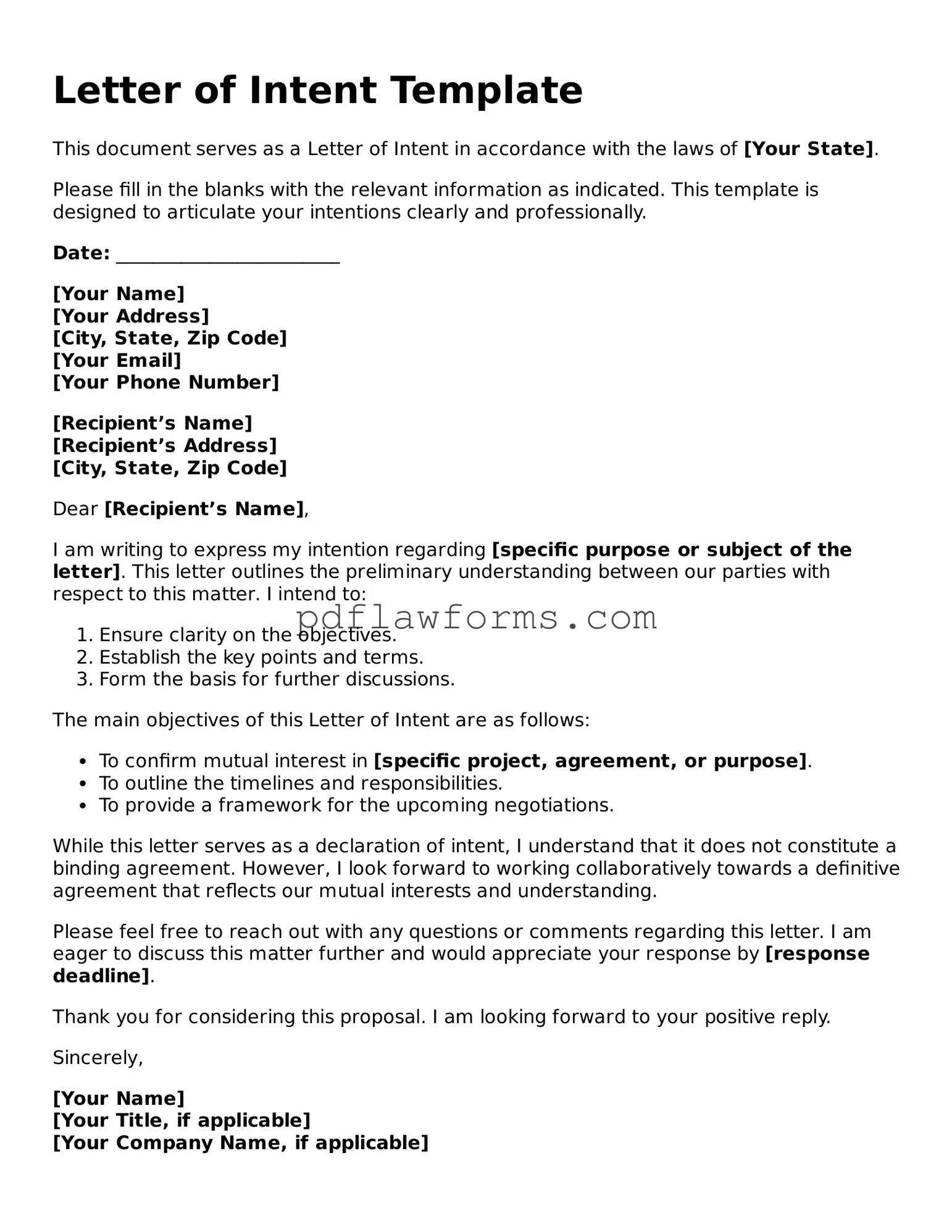Filling out a Letter of Intent (LOI) can be a crucial step in various processes, such as business negotiations or educational applications. However, many individuals make common mistakes that can undermine their intentions. One frequent error is failing to clearly state the purpose of the letter. A vague introduction can leave the reader confused about the intent, which may lead to misunderstandings or missed opportunities.
Another mistake is neglecting to include essential details. An effective LOI should outline specific information, such as timelines, expectations, and the parties involved. Omitting these details can create ambiguity and weaken the overall impact of the letter. Additionally, some individuals may overlook the importance of a professional tone. Using informal language or slang can diminish the seriousness of the letter and may not convey the intended professionalism.
Many people also underestimate the power of proofreading. Spelling and grammatical errors can distract the reader and detract from the message. Taking the time to review the document for clarity and correctness is vital. Furthermore, another common oversight is failing to personalize the letter. A generic LOI can seem insincere. Tailoring the content to the specific recipient can enhance the connection and show genuine interest.
Moreover, some individuals might forget to include a clear call to action. A well-crafted LOI should guide the reader on the next steps or desired outcomes. Without this direction, the recipient may be unsure of how to respond. Lastly, not following the required format can also lead to issues. Different organizations or institutions may have specific guidelines for LOIs, and failing to adhere to these can result in rejection or delays.
By avoiding these common pitfalls, individuals can enhance the effectiveness of their Letter of Intent. Clear communication, attention to detail, and a professional approach can significantly improve the chances of achieving the desired outcome.
